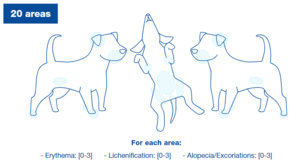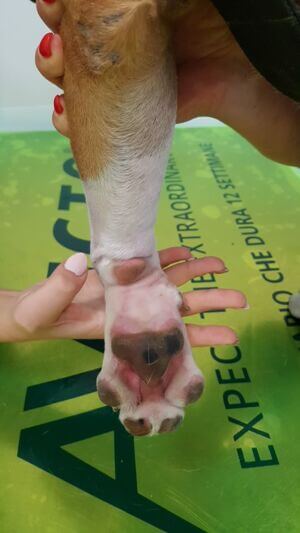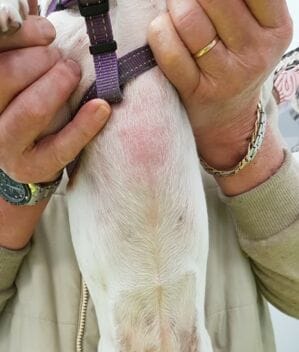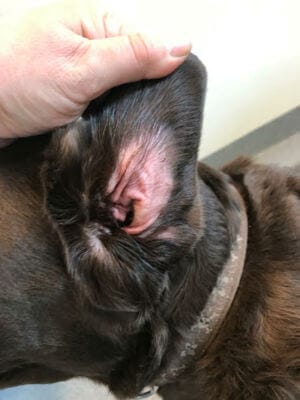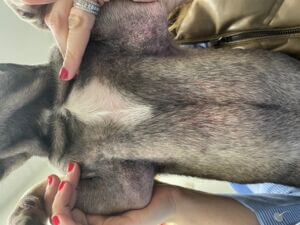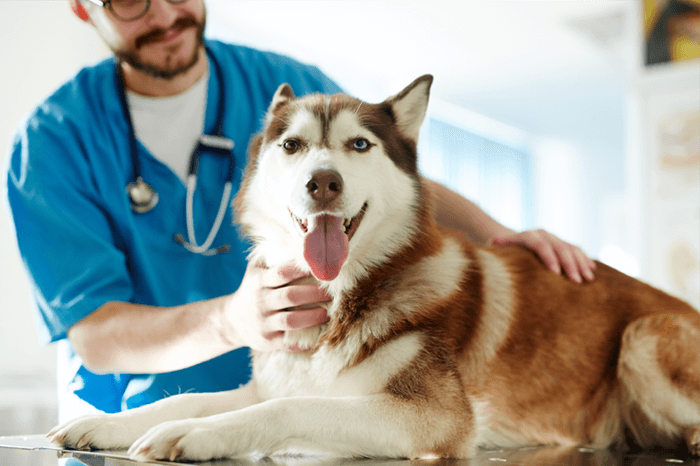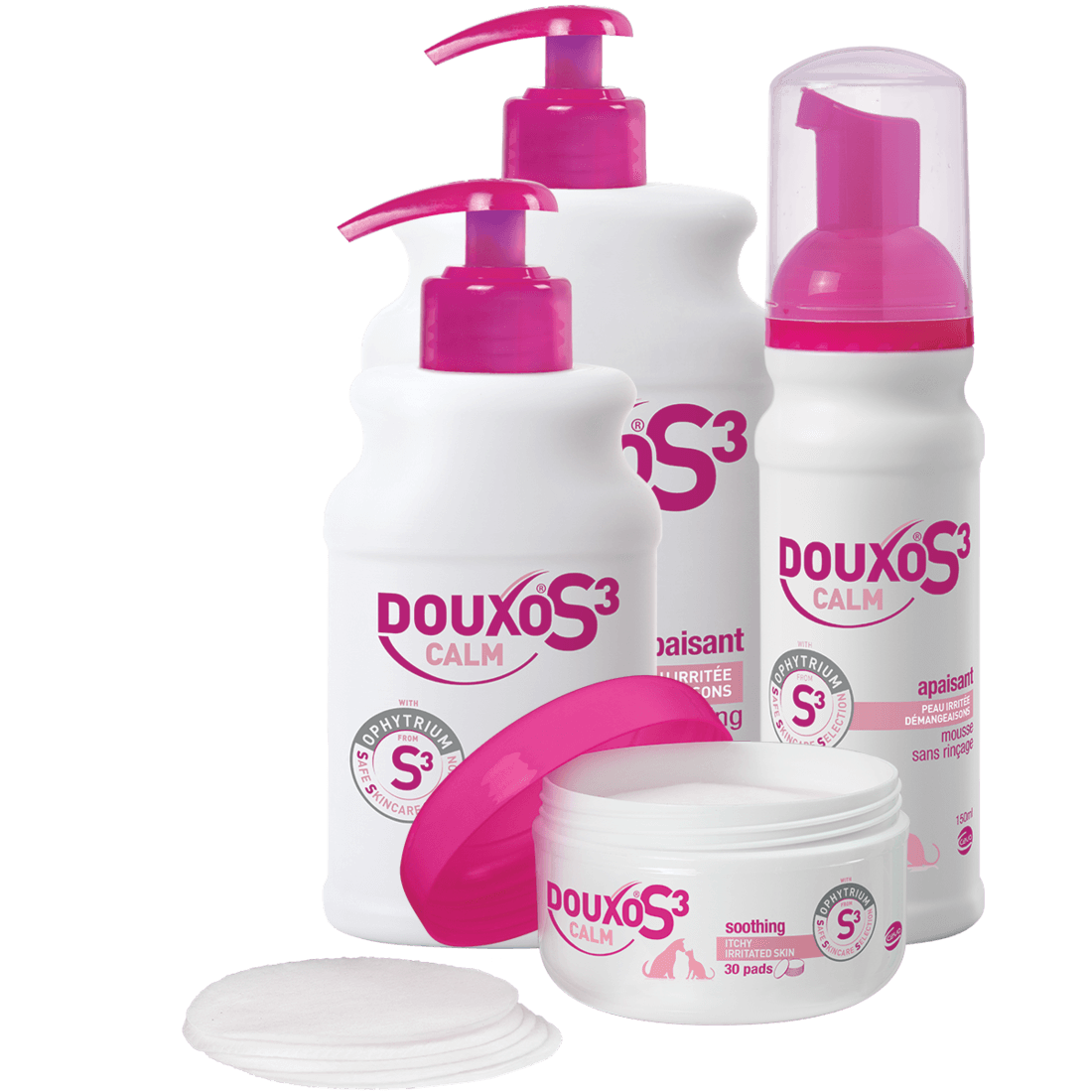Усе, що вам потрібно знати про харчові алергії у собак
Марина Ветеринарний лікарЯк і люди, собаки можуть страждати від харчової алергії. Це не найпоширеніший тип захворювання, але її слід досліджувати у будь-яких тварин, які страждають на алергію. Крім того, лікування харчової алергії базується на принципі виключення алергену.
Харчова алергія, мабуть, найвідоміша алергія у собак. Так само, як і у нас, у цих алергій є кілька причин, вони часто проявляються як проблеми зі шкірою і рідше як проблеми з травленням. Однак, на відміну від людей, наші домашні улюбленці не можуть сказати нам, що саме викликає проблеми і коли. Отже, ми часто пропускаємо перші ознаки і не усвідомлюємо, доки не побачимо щось справді очевидне, наприклад почервоніння або крововиливи на шкірі. Але до того часу бідні домашні тварини насправді страждають.
Як дізнатися, що у вашого собаки харчова алергія?
Коли ви бачите, як ваша собака облизує та кусає себе за різні частини тіла, легко подумати, що це нормальна поведінка. Але це також може бути спровоковано алергією, тому важливо знати різницю між свербінням, яке можна почесати, і свербінням, яке ніколи не зникає. Отже, якщо ваш собака не дає вам спати всю ніч, чешучи та дряпаючи свою шкіру, можна сміливо стверджувати, що він також погано спить.
Існує ряд ознак, які можуть вказувати на те, що ваш собака страждає на алергію, але не є специфічними для харчової алергії, зокрема:
- Дряпання, свербіж шкіри, інтенсивність яких може бути різною (зокрема, це відбувається цілий рік і не є сезонним)
- Чесання та покусування лап та задньої частини тіла
- Тертя мордою об стіну або різні предмети у домі
- У білих або світлих собак можна помітити, що шерсть у якийсь момент набуває темнішого кольору – це через плями слини, від повторного вилизування
- Втрата волосяного покриву
- Легкий шкірні висипання або почервоніння, хворобливість шкіри (особливо на стопах, обличчі, підборідді, вухах, пахвах, животі та у паху)
- Червоні, запалені вуха, які сверблять
- Рецидивуючі вушні інфекції
- Жирна шерсть / шкіра, що лущиться
- Періодичні проблеми з параанальними залозами та потреба в більш частому їх очищенні
- У більш хронічних випадках шкіра може бути темнішою, товстішою та з пігментними плямами
- Періодична діарея або рідкі фекалії з різким неприємним запахом
- Блювання
Around 10-15% of dogs with a recognised food allergy exhibit such gastrointestinal signs such as vomiting or diarrhoea. Inflammation has damaged them so they cannot absorb nutrients properly, the same nutrients the skin needs to stay healthy and protective.
It’s important to remember that it has probably taken some time for your dog to develop a food allergy. So, it will take a while for the issue to resolve, be patient and stay the course! Also don’t dismiss food as the cause just because they have always eaten the same food.
What causes dog food allergies?
What is a food allergy?
You are probably familiar with the term “allergy”, hay fever is a perfect example. We breathe in the tiny pollen (known as an allergen) and our body recognises the pollen as foreign, so it mounts an attack to defend the body. Unfortunately, that “defence” can vary in severity in each individual. Some may experience mild but uncontrolled fits of sneezing or watery eyes, while others can have difficulty breathing and require medication.
A food allergy is the same but luckily dogs have a much milder response than, say, a person with a nut or shellfish allergy. But that’s not to say that dogs do not suffer. If undetected, a food allergy can cause long term damage to the skin.
Everyday, just like our skin, your dog’s skin acts as a barrier to the outside, protecting the body from all types of attack from bacteria to UV rays. But if skin cells are weakened from long term inflammation, they can’t do their job properly.
Because of this, the skin is then constantly under attack from the outside by bacteria, fungi and even more allergens and it is simply just unable to cope. The result is an unhappy, uncomfortable dog with a nasty skin infection, while we struggle to understand why the vet is telling us it is all due to their food. The exact same food they have eaten their entire life. It turns out, “You are what you eat”.
What are the most common food allergies in dogs?
Dogs can be allergic to any ingredient in their food, even if it’s something they’ve always eaten. However, there are certain ingredients that are more likely to cause an allergic reaction in your dog. Most commonly, dogs tend to be allergic to proteins, particularly those from beef (60% of the cases), dairy products, chicken, lamb, soy (32%) corn, wheat, eggs. Fish proteins can also trigger allergic reactions.
Unfortunately, many of these are common ingredients in dog food. When a dog eats one of these ingredients, their immune system overreacts and symptoms are triggered.
Are certain breeds of dog more prone to food allergies?
Certain breeds aren’t more predisposed to food allergies directly, but as food allergies are more frequently reported in dogs with atopic dermatitis (an intensely itchy skin disease), these breeds do tend to present with food allergies more often. Breeds include American Cocker Spaniels, English Springer Spaniels, Labrador Retrievers, Collies, Miniature Schnauzers, Shar Peis, Poodles, Westies, Boxers, Dachshunds, Dalmatians, Lhasa Apsos, German Shepherds and Golden Retrievers.
How is a food allergy diagnosed in dogs?
If your dog is showing symptoms of a food allergy, make an appointment with your vet. The first thing your vet will check is that your dog’s parasite control is up-to-date and effective, in order to rule out a possible flea-related allergy. He will also check for potential bacterial and/or yeast infection and solve it before investigating further.
If your vet is confident that your dog doesn’t have a flea allergy, they will start to investigate the possibility of a food allergy with your dog. Show them everything you feed your dog and don’t forget to mention if you have other pets that might have different food that your dog might have access to, such as cat food.
One of the biggest causes of dog food allergies are all those yummy dog treats we love to buy. They can be coated in artificial colours and flavours to make them more appetising. Cutting those out of the diet can be a first step.
Along with cutting out treats, your vet is likely to recommend a food trial for your dog. This is the best way to diagnose a food allergy; it simply means feeding a hypoallergenic diet (that your vet has recommended) which contains specific ingredients that your dog won’t react to as he was never fed with (that is why your vet may ask all the food you fed your dog), and nothing else, for a set period of time – usually, around 8 weeks (constant access to fresh water is needed, as always). This hypoallergenic diet can be a commercially-prepared diet, or home-cooked if you have the time to do so. If your dog improves during this time, it’s likely they were allergic to something in their normal dog food.
To confirm this, your vet will reintroduce your dog’s normal food and usually, the dog will relapse within 2 weeks. If your dog eats more than one type of food, one food will be reintroduced at a time. As part of this process, the elimination diet will be fed again and then ideally each specific allergen should be added to the dog’s diet one at a time for 1 to 2 weeks to determine which of the allergens is causing the adverse food reaction.
Long term care for a dog with food allergies
It’s important to keep your dog on an appropriate diet for life, as the most effective treatment is simply to avoid feeding a diet that contains the offending food allergen. Prevent your dog from ingesting anything other than the recommended diet and keep their water and food bowls squeaky clean. Your vet will be able to help you choose the most appropriate diet for your dog; simply put, it just needs to be a high-quality diet that avoids the allergen that triggers a response in your dog.
Many straightforward food allergies can be resolved with a careful diet plan. Once the allergens are identified, the response in your dog’s condition is usually fairly quick, However, finding the allergen can take a little time and requires patience. During this time to provide some relief to your dog, your vet may prescribe products that will help to soothe the skin. Among them, topical products such as DOUXO® S3 CALM will help soothe inflamed skin, strengthen the damaged skin barrier and prevent adhesion of bacteria that can enhance the flare-up.
If your vet suspects a more complex allergy or multiple allergies, they may recommend in-depth allergy testing. Having a health diary/log would be very helpful at this point, especially if you can look back and see when the signs first appeared. Your vet will look for trends, especially seasonal. If you notice your dog starts scratching more in a particular season, it could be an indicator that they do have multiple allergies. In this case your vet will recommend in-depth allergy testing to find the exact allergens that your dog is sensitive to.
With an accurate diagnosis your vet can start treatment as soon as possible and your best friend can go back to an itch-free life.


